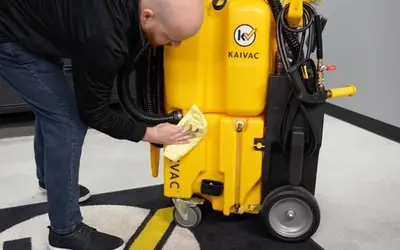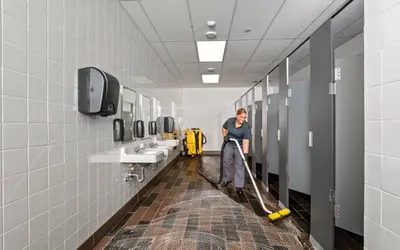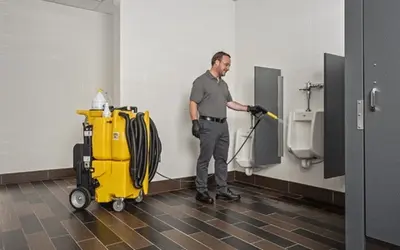Disgusting School Restrooms Harm Health and Morale

The report card is in. Smelly, disgusting school restrooms actively harm student health, impede learning, and chip away at morale.
It’s not surprising. The state of the restroom sets the tone for any organization. Filthy toilets, broken sinks, unpleasant smells, and a lack of soap and towels do not inspire trust in management or confidence about quality. Would you eat at a restaurant or shop in a store that had dirty restrooms?
Students, of course, don’t have a choice. They must spend seven hours a day at school, where more often than not, policy or lack of proper maintenance keeps them from using the restroom as needed. As a result, students frequently take extreme, and unhealthy, measures. Sometimes they “hold it” causing discomfort, distraction, and an increased chance of a urinary tract infection. Often they skip food and drink entirely, leading to headaches and trouble focusing.
But mostly students internalize negative messages about school, the administration, and themselves. A Bradley Corporation survey of high school students found that 68% say poorly maintained or unclean school restrooms show the school doesn’t care about its students, reflects poor school management, and lowers their overall opinion of the school.
“The negative impacts of a dirty restroom don’t stay in the restroom,” says Patrick Purcell, Kaivac regional director. “They ripple out, eventually touching everyone and everything in the school.”
Holding your nose and actually using a dirty school restroom causes unpleasant ripple effects too. Poorly maintained restrooms often harbor dangerous pathogens like Norovirus, E. coli, Shigella, and Streptococcus. These germs hitch a ride on shoes, books, and bags and travel throughout the school. Broken sinks or a lack of soap and towels means hands go unwashed, offering more opportunities for dangerous bacteria to travel every place a student touches.
Along with being unhealthy and depressing, dirty restrooms are also costly. If left unmaintained, restroom soils build up and damage expensive building materials beyond repair. The grout on tiled floors, for instance, soaks up and holds on to urine. If not effectively cleaned, bacteria feeding on that urine create a strong, offensive odor that is impossible to mask and very hard to remove. Often, the grout becomes irreparably stained or damaged.
Perhaps worst of all, disgusting, smelly restrooms create a negative feedback loop. Poorly maintained restrooms make students feel disrespected and disregarded by teachers and administrators, so they disregard and disrespect the space. Litter, graffiti, and destructive vandalism make restrooms more unpleasant, more frustrating, and more difficult to get fully clean.
Access to clean, safe restrooms is a basic human right. Yet schools have always struggled to deliver them. “Exposés” about filthy restrooms are a favorite topic for high school newspapers. Even the New York Times published a call to action about this pressing matter—way back in 2004.
Cleaning school restrooms can be hard. Fortunately, recent advances in cleaning processes and tools make this goal much more attainable. In the end, the effort is worth it, because hygienic, fresh-smelling spaces give so much back in return. Students feel valued, community health is protected, and valuable building assets are maintained.
Find out more about restroom cleaning and schools here.
Related Posts

Preventive Maintenance for Your No-Touch Cleaning® System
Your Kaivac No-Touch Cleaning system makes restroom maintenance fast and easy. Keeping your No-Touch Cleaning system in good working order is also fast and easy. Kaivac makes performing preventative maintenance and troubleshooting potential issues simple. No special equipment or technical expertise required.
Read more
How to Clean a School Restroom
Clean school restrooms create a safe, welcoming environment. Students, staff, and parents expect sanitary conditions, especially in the restrooms. Anything less immediately effects morale and impacts learning.
Read more
Cherokee County School District Takes Cleaning into Their Own Hands With Kaivac
Each of the district’s six high schools maintained their restrooms with a No-Touch Cleaning system from Kaivac.
Read more